Artificial Intelligence Techniques for the Hydrodynamic Characterization of Two-Phase Liquid–Gas Flows: An Overview and Bibliometric Analysis
Abstract
:1. Introduction
1.1. General Aspects
1.1.1. Main Components of Soft Computing
1.1.2. Industrial Implications
1.1.3. Advances in Artificial Intelligence (AI)
1.2. Multiphase Flux and Their Characteristics
1.2.1. Multiphase Flows
Flow Regime or Flow Pattern
Flow Maps or Flow Charts
1.2.2. Gas–Liquid Flow Patterns
- Annular flow: In this flow pattern, the gas converges to form a high-velocity gas core flowing in the center of the pipe (Figure 3a). Most of the liquid is distributed as liquid film layers lining the circumferential wall of the pipe. Some of the liquid phase is entrained as small droplets in the gas core;
- Bubble flow: As shown in Figure 3b, the gaseous phase exists in small discrete bubbles dispersed within the continuous liquid phase, with liquid comprising most of the fluid;
- Agitated flow: The agitated flow is called the slug-to-annular or stratified transition flow. The image of this flow pattern shows that both phases are discontinuous, and gas bubbles become narrower and irregular (Figure 3c). With the oscillation and perturbation of the gas–liquid interface, the liquid phase accumulates and is lifted by the gas. Consequently, a liquid bridge is formed;
- Intermittent or slug flow: This flow is characterized by irregular blocky and bullet-shaped bubbles (Figure 3d). Some giant bullet-shaped bubbles move closer to the top of the pipe, a process known as piston flow;
- Stratified flow: The gas–liquid interface and each phase are distinct for stratified flow. The liquid flows at the bottom of the pipe, and the gas flows at the top (Figure 3e). Even if there is a wave in the gas–liquid interface in the images, they are identified as stratified flow if the wave does not hit the upper film and form a liquid bridge.
1.2.3. Vertical Pipeline
- Liquid/tiny bubbles: A small number of tiny and discrete gas bubbles flow in a continuous liquid phase;
- Small bubbles: A few small and discrete gas bubbles flow in a continuous liquid phase;
- Large bubbles: Small and discrete gas bubbles, large spherical bubbles, and slug-like bubbles within the fluid flow in a continuous liquid phase;
- Dense bubbles/Taylor bubbles: Many small- to medium-sized bubbles flow in a continuous liquid phase. The bubbles are distributed more consistently and densely along the image, with more than half of the tube’s visualization section occupied by bubbles. Taylor bubbles are also found in this frame;
- Churn or agitation: A mixture of gas and liquid flowing chaotically, without visible bubbles;
- Annular: A gas core forms from the center of the pipeline. A wavy liquid film flows along the pipeline walls, and liquid droplets are dispersed within the gas core;
- Mist/vapor: No liquid is seen as a continuous gas phase flows through the channel.
1.3. Characteristics Calculation to Determine Flow Patterns
1.3.1. Volumetric Fractions
1.3.2. Injection Volumetric Fractions
1.3.3. Surface Injection Velocities
1.3.4. Holdup or In Situ Volumetric Fraction
1.3.5. In Situ Velocities
1.3.6. The Real In Situ Velocity
1.4. Aim of This Work
- (1)
- The article provides a comprehensive and updated review of the state-of-the-art use of artificial intelligence techniques to characterize two-phase liquid–gas flows in a hydrodynamic manner. This review allows researchers and professionals to understand the current research landscape, identify emerging trends, and evaluate the progress made in developing new methodologies;
- (2)
- A bibliometric analysis is carried out that quantitatively examines scientific production in the area, including the number of publications, publication trends over time, major thematic areas addressed, and geographic distribution of authors. This analysis provides an overview of research activity in artificial intelligence applied to characterizing two-phase liquid–gas flows;
- (3)
- Different approaches and methodologies used in applying artificial intelligence for hydrodynamic characterization of two-phase flows are identified and described. These include convolutional neural networks, recurrent neural networks, multilayer perceptrons, image processing techniques, and video analysis integration;
- (4)
- Based on the review and bibliometric analysis, the article synthesizes the main results obtained in the literature, highlighting significant advances, challenges yet to be overcome, and possible future research directions. This synthesis provides valuable guidance for researchers and professionals interested in further advancing the field.
2. Methodology
2.1. Systematic Literature Review
2.1.1. Search Strategy
- What artificial intelligence techniques have been used to detect pipeline liquid–gas two-phase flow patterns?
- What artificial intelligence techniques have been used to determine volumetric fractions in liquid–gas two-phase flows in pipelines?
2.1.2. Inclusion Criteria
2.2. Bibliometric Analysis (BA)
3. Results and Discussions
3.1. Artificial Intelligence Techniques Used for Hydrodynamic Characterization of Two-Phase Flow
Support Vector Machine (SVM)
3.2. Neural Network
3.2.1. Data-Driven Approaches
3.2.2. Gamma Ray Sensor
3.2.3. Capacitive Sensors
3.2.4. Doppler Ultrasonic Sensor
3.2.5. Pressure Gradient
3.3. Convolutional Neural Network (CNN)
3.3.1. Ultrasound Doppler Velocimetry (UDV)
3.3.2. Data-Driven Approaches
3.3.3. Image Identification
3.4. Transformer Neural Network
4. Analysis of Bibliometric Indicators
4.1. Co-Ocurrence analysis
4.2. Authors and Co-Authorship
4.3. Publication Trends
4.4. Most Relevant Sources
4.5. Collaboration between Authors
5. Conclusions and Trends
- Advancements in artificial intelligence applications: Exploring how recent advancements in artificial intelligence have revolutionized the characterization of hydrodynamic properties in two-phase liquid–gas flows, providing a comprehensive overview of cutting-edge techniques and methodologies;
- Emerging technologies in hydrodynamic characterization: Investigating the latest trends and emerging technologies in the application of artificial intelligence for accurately characterizing the hydrodynamic behavior of two-phase liquid–gas flows, highlighting key developments and their implications for various industries;
- AI-driven insights into two-phase flow dynamics: Analyzing how artificial intelligence techniques are reshaping our understanding of the complex dynamics involved in two-phase liquid–gas flows, offering insights into flow patterns, volumetric fractions, and pressure gradients through advanced computational models and data-driven approaches;
- Integration of AI methods in hydrodynamic analysis: Examining the integration of artificial intelligence methods such as machine learning, deep learning, and neural networks into hydrodynamic analysis, showcasing their effectiveness in predicting flow behavior, optimizing process parameters, and enhancing overall efficiency;
- Future directions and challenges: Discussing future directions and challenges in the field of hydrodynamic characterization of two-phase liquid–gas flows using artificial intelligence. Addressing issues such as scalability, model interpretability, and data quality while outlining potential avenues for further research and innovation.
Author Contributions
Funding
Data Availability Statement
Acknowledgments
Conflicts of Interest
Abbreviations
| AI | Artificial Intelligence |
| AIoT | Artificial Intelligence of Things |
| ART | Adaptive Resonance Theory |
| BA | Bibliometric Analysis |
| CM | Committee Machine |
| CMAC | Cerebellar Model Articulation Controller |
| CNN | Cellular Neural Network |
| CNn | Convolutional Neural Networks |
| CV | Controlled Variable |
| DRNN | Deep Rectifier Neural Network |
| DWT | Discrete Wavelet Transform |
| ELM | Extreme Learning Machine |
| FCC | Fluid Catalytic Cracking |
| FL | Four Layer |
| GVF | Gas Volume Fraction |
| HCO | Heavy Cycle Oil |
| LCO | Light Cycle Oil |
| LSTM | Short-Term Memory |
| MAE | Mean Absolute Error |
| ML | Multilayer |
| MLP | Multilayer Perceptron |
| MV | Manipulated Variable |
| PNN | Probabilistic Neural Network |
| PSD | Power Spectral Density |
| RBF | Radial Basis Function |
| SL | Single Layer |
| SVM | Support Vector Machine |
| TL | Three Layers |
| UDV | Ultrasonic Doppler Velocimetry |
| WGC | Wet Gas Compressor |
| WNN | Wavelet Neural Network |
References
- Pietrzak, M.; Płaczek, M.; Witczak, S. Upward flow of air-oil-water mixture in vertical pipe. Exp. Therm. Fluid Sci. 2017, 81, 175–186. [Google Scholar] [CrossRef]
- Yan, R.; Viumdal, H.; Mylvaganam, S. Process tomography for model free adaptive control (MFAC) via flow regime identification in multiphase flows. IFAC-PapersOnLine 2020, 53, 11753–11760. [Google Scholar] [CrossRef]
- Wang, Y.; Adam, M.L.; Zhao, Y.; Zheng, W.; Gao, L.; Yin, Z.; Zhao, H. Machine Learning-Enhanced Flexible Mechanical Sensing. Nano-Micro Lett. 2023, 15, 55. [Google Scholar] [CrossRef] [PubMed]
- Yan, Y.; Wang, L.; Wang, T.; Wang, X.; Hu, Y.; Duan, Q. Application of soft computing techniques to multiphase flow measurement: A review. Flow Meas. Instrum. 2018, 60, 30–43. [Google Scholar] [CrossRef]
- Khaldi, M.K.; Al-Dhaifallah, M.; Taha, O. Artificial intelligence perspectives: A systematic literature review on modeling, control, and optimization of fluid catalytic cracking. Alex. Eng. J. 2023, 80, 294–314. [Google Scholar] [CrossRef]
- Sestito, G.S.; Álvarez-Briceño, R.; Ribatski, G.; da Silva, M.M.; de Oliveira, L.P.R. Vibration-based multiphase-flow pattern classification via machine learning techniques. Flow Meas. Instrum. 2023, 89, 102290. [Google Scholar] [CrossRef]
- Li, S.; Zhao, F.; Bai, B. Gas–liquid intermittent flow rates measurement based on two-phase mass flow multiplier and neural network. Meas. Sci. Technol. 2021, 32, 105306. [Google Scholar] [CrossRef]
- Urbina-Salas, I.; Vázquez-Ramírez, E.E.; García-Sánchez, E.; Martínez-Rodríguez, E.D.; García-García, L.; De La Rosa, L.G.; Razón-González, J.P. Application of convolutional neural networks for the classification of two-phase flow patterns. In Proceedings of the 2021 IEEE International Autumn Meeting on Power, Electronics and Computing (ROPEC), Ixtapa, Mexico, 10–12 November 2021; Volume 5, pp. 1–6. [Google Scholar] [CrossRef]
- Nnabuife, S.G.; Kuang, B.; Whidborne, J.F.; Rana, Z.A. Development of gas-liquid flow regimes identification using a noninvasive ultrasonic sensor, belt-shape features, and convolutional neural network in an S-shaped riser. IEEE Trans. Cybern. 2021, 53, 3–17. [Google Scholar] [CrossRef] [PubMed]
- Kanin, E.A.; Osiptsov, A.A.; Vainshtein, A.L.; Burnaev, E.V. A predictive model for steady-state multiphase pipe flow: Machine learning on lab data. J. Pet. Sci. Eng. 2019, 180, 727–746. [Google Scholar] [CrossRef]
- Jiang, Z.; Wang, H.; Yang, Y.; Li, Y. Comparison of machine learning methods for multiphase flowrate prediction. In Proceedings of the IST 2019—2019 IEEE International Conference on Imaging Systems and Techniques, Abu Dhabi, United Arab Emirates, 9–10 December 2019. [Google Scholar] [CrossRef]
- Hasanzadeh, Y.; Alavifazel, S.A.; Azizi, Z.; Peyghambarzadeh, S.M.; Azimi, A. Prediction of the pressure drop in water-high viscosity oil flows using artificial neural network. Solid State Technol. 2021, 64, 7167–7186. [Google Scholar]
- Lin, Z.; Liu, X.; Lao, L.; Liu, H. Prediction of two-phase flow patterns in upward inclined pipes via deep learning. Energy 2020, 210, 118541. [Google Scholar] [CrossRef]
- Zhang, G.; Wang, L.; Wang, H.; Chen, Y.; Dang, J. Theoretical and experimental research on two-phase flow image reconstruction and flow pattern recognition. Rev. Sci. Instrum. 2023, 94, 034709. [Google Scholar] [CrossRef] [PubMed]
- Zhu, J.H.; Munjal, R.; Sivaram, A.; Paul, S.R.; Tian, J.; Jolivet, G. Flow regime detection using gamma-ray-based multiphase flowmeter: A machine learning approach. Int. J. Comput. Methods Exp. Meas. 2022, 10, 26–37. [Google Scholar] [CrossRef]
- Arteaga-Arteaga, H.B.; Mora-Rubio, A.; Florez, F.; Murcia-Orjuela, N.; Diaz-Ortega, C.E.; Orozco-Arias, S.; delaPava, M.; Bravo-Ortíz, M.A.; Robinson, M.; Guillen-Rondon, P.; et al. Machine learning applications to predict two-phase flow patterns. PeerJ Comput. Sci. 2021, 7, e798. [Google Scholar] [CrossRef] [PubMed]
- Cantarero-Rivera, F.J.; Yang, R.; Li, H.; Qi, H.; Chen, J. An artificial neural network-based machine learning approach to correct coarse-mesh-induced error in computational fluid dynamics modeling of cell culture bioreactor. Food Bioprod. Process. 2024, 143, 128–142. [Google Scholar] [CrossRef]
- Rushd, S.; Hafsa, N.; Yusuf, H. Comparative Performance of Machine Learning and Deep Learning Algorithms in Predicting Gas-Liquid Flow Regimes. SSRN 2022, 4225318. [Google Scholar] [CrossRef]
- Wu, Q.; Zou, S.; Xu, Q.; Chang, Y.; Zhao, X.; Yao, T.; Guo, L. A comparison of gas-liquid two-phase flow behaviors between two offshore pipeline-riser systems with different geometric parameters: From view of flow pattern identification. Ocean Eng. 2023, 288, 116179. [Google Scholar] [CrossRef]
- Olbrich, M.; Riazy, L.; Kretz, T.; Leonard, T.; van Putten, D.S.; Bär, M.; Oberleithner, K.; Schmelter, S. Deep learning based liquid level extraction from video observations of gas–liquid flows. Int. J. Multiph. Flow 2022, 157, 104247. [Google Scholar] [CrossRef]
- Quintino, A.M.; da Rocha, D.L.L.N.; Júnior, R.F.; Rodriguez, O.M.H. Flow Pattern Transition in Pipes Using Data-Driven and Physics-Informed Machine Learning. J. Fluids Eng. 2020, 143, 031401. [Google Scholar] [CrossRef]
- Iliyasu, A.M.; Bagaudinovna, D.K.; Salama, A.S.; Roshani, G.H.; Hirota, K. A Methodology for Analysis and Prediction of Volume Fraction of Two-Phase Flow Using Particle Swarm Optimization and Group Method of Data Handling Neural Network. Mathematics 2023, 11, 916. [Google Scholar] [CrossRef]
- Qiao, W.; Huang, E.; Guo, H.; Li, W.; Chen, H. Identification of two-phase flow patterns in Z-shaped offshore pipelines based on deep learning technologies. Ocean Eng. 2024, 291, 116422. [Google Scholar] [CrossRef]
- Salgado, W.L.; de Freitas Dam, R.S.; da Silva, A.X.; Salgado, C.M. Void fraction prediction using prompt gamma neutron activation analysis and artificial intelligence. Radiat. Phys. Chem 2023, 213, 111212. [Google Scholar] [CrossRef]
- Shadloo, M.S.; Rahmat, A.; Karimipour, A.; Wongwises, S. Estimation of pressure drop of two-phase flow in horizontal long pipes using artificial neural networks. J. Energy Resour. Technol. 2020, 142, 112110. [Google Scholar] [CrossRef]
- Ribeiro, J.X.F.; Liao, R.; Aliyu, A.M.; Liu, Z. Prediction of pressure gradient in two and three-phase flows in vertical pipes using an artificial neural network model. Int. J. Eng. Technol. Innov. 2019, 9, 155–170. [Google Scholar]
- Mauro, A.W.; Revellin, R.; Viscito, L. Development and assessment of performance of artificial neural networks for prediction of frictional pressure gradients during two-phase flow. Int. J. Heat Mass Transf. 2024, 221, 125106. [Google Scholar] [CrossRef]
- Mayet, A.M.; Chen, T.C.; Alizadeh, S.M.; Al-Qahtani, A.A.; Qaisi, R.M.A.; Alhashim, H.H.; Eftekhari-Zadeh, E. Application of Artificial Intelligence for Determining the Volume Percentages of a Stratified Regime’s Three-Phase Flow, Independent of the Oil Pipeline’s Scale Thickness. Processes 2022, 10, 1996. [Google Scholar] [CrossRef]
- Faraji, F.; Santim, C.; Chong, P.L.; Hamad, F. Two-phase flow pressure drop modelling in horizontal pipes with different diameters. Nucl. Eng. Des. 2022, 395, 111863. [Google Scholar] [CrossRef]
- Raza, S.; Sherin, S.; Hussain, S. Review of Phase Interference in Multiphase Flow for Enhancing. J. Hunan Univ. Sci. 2023, 50, 81–113. [Google Scholar]
- Yadigaroglu, G.; Hetsroni, G. Nature of Multiphase Flows and Basic Concepts. In Introduction to Multiphase Flow: Basic Concepts, Applications and Modelling; Springer: Cham, Switzerland, 2018. [Google Scholar]
- Cheng, L.; Xia, G. Flow patterns and flow pattern maps for adiabatic and diabatic gas liquid two phase flow in microchannels: Fundamentals, mechanisms and applications. Exp. Therm. Fluid Sci. 2023, 148, 110988. [Google Scholar] [CrossRef]
- Nie, F.; Wang, H.; Song, Q.; Zhao, Y.; Shen, J.; Gong, M. Image identification for two-phase flow patterns based on CNN algorithms. Int. J. Multiph. Flow 2022, 152, 104067. [Google Scholar] [CrossRef]
- Kadish, S.; Schmid, D.; Son, J.; Boje, E. Computer Vision-Based Classification of Flow Regime and Vapor Quality in Vertical Two-Phase Flow. Sensors 2022, 22, 996. [Google Scholar] [CrossRef] [PubMed]
- Zhang, L.; Zhang, S. Gas/Liquid Two-Phase Flow Pattern Identification Method Using Gramian Angular Field and Densely Connected Network. IEEE Sens. J. 2023, 23, 4022–4032. [Google Scholar] [CrossRef]
- Casas-Pulido, A.F.; Hernández-Cely, M.M.; Rodríguez-Hernández, O.M. Análisis experimental de flujo líquido-líquido en un tubo horizontal usando redes neuronales artificiales. Rev. UIS Ing. 2023, 22, 49–56. [Google Scholar] [CrossRef]
- Li, H.; Li, Y.; Zheng, G.; Zhou, Y. Interaction between household energy consumption and health: A systematic review. Renew. Sustain. Energy Rev. 2024, 189, 113859. [Google Scholar] [CrossRef]
- Donald, W.E.; Baruch, Y.; Ashleigh, M.J. Construction and operationalisation of an Employability Capital Growth Model (ECGM) via a systematic literature review (2016–2022). Stud. High. Educ. 2024, 49, 1–15. [Google Scholar] [CrossRef]
- Ciapponi, A. La declaración PRISMA 2020: Una guía actualizada para reportar revisiones sistemáticas. Evid. Actual. Práctica Ambulatoria 2021, 24, e002139. [Google Scholar] [CrossRef]
- Yuan, J.; Mao, W.; Hu, C.; Zheng, J.; Zheng, D.; Yang, Y. Leak detection and localization techniques in oil and gas pipeline: A bibliometric and systematic review. Eng. Fail. Anal. 2023, 146, 107060. [Google Scholar] [CrossRef]
- García-León, R.A.; Martínez-Trinidad, J.; Campos-Silva, I. Historical Review on the Boriding Process using Bibliometric Analysis. Trans. Indian Inst. Met. 2021, 74, 541–557. [Google Scholar] [CrossRef]
- García-León, R.A.; Afanador-García, N.; Guerrero-Gómez, G. A Scientometric Review on Tribocorrosion in Hard Coatings. J. Bio-Tribo-Corros. 2023, 9, 39. [Google Scholar] [CrossRef]
- Hou, Z.; Lee, C.K.M.; Lv, Y.; Keung, K.L. Fault detection and diagnosis of air brake system: A systematic review. J. Manuf. Syst. 2023, 71, 34–58. [Google Scholar] [CrossRef]
- García-León, R.A.; Gómez-Camperos, J.A.; Jaramillo, H.Y. Scientometric Review of Trends on the Mechanical Properties of Additive Manufacturing and 3D Printing. J. Mater. Eng. Perform. 2021, 30, 4724–4734. [Google Scholar] [CrossRef]
- Hu, Z.; Tariq, S.; Zayed, T. A comprehensive review of acoustic based leak localization method in pressurized pipelines. Mech. Syst. Signal Process. 2021, 161, 107994. [Google Scholar] [CrossRef]
- Fan, H.; Tariq, S.; Zayed, T. Acoustic leak detection approaches for water pipelines. Autom. Constr. 2022, 138, 104226. [Google Scholar] [CrossRef]
- Dong, F.; Zhang, S.; Shi, X.; Wu, H.; Tan, C. Flow regimes identification-based multidomain features for gas–liquid two-phase flow in horizontal pipe. IEEE Trans. Instrum. Meas. 2021, 70, 1–11. [Google Scholar] [CrossRef]
- Amirsoleymani, A.; Ting, D.S.K.; Carriveau, R.; Brown, D.; McGillis, A. Two-phase flow pattern identification in CAES systems with dimensional analysis coupled with support vector machine. Int. J. Multiph. Flow 2023, 160, 104343. [Google Scholar] [CrossRef]
- Xu, Q.; Wang, X.; Luo, X.; Tang, X.; Yu, H.; Li, W.; Guo, L. Machine learning identification of multiphase flow regimes in a long pipeline-riser system. Flow Meas. Instrum. 2022, 88, 102233. [Google Scholar] [CrossRef]
- Yaqub, M.W.; Marappagounder, R.; Rusli, R.; Prasad, D.M.R.; Pendyala, R. Flow pattern identification and measurement techniques in gas-liquid-liquid three-phase flow: A review. Flow Meas. Instrum. 2020, 76, 101834. [Google Scholar] [CrossRef]
- Jeshvaghani, P.A.; Khorsandi, M.; Panahi, R. Flow regime identification and gas volume fraction prediction in two-phase flows using a simple gamma-ray gauge combined with parallel artificial neural networks. Flow Meas. Instrum. 2022, 86, 102190. [Google Scholar] [CrossRef]
- AlSaif, A.; Al-Sarkhi, A.; Ismaila, K.; Abdulkadir, M. Road map to develop an artificial neural network to predict two-phase flow regime in inclined pipes. J. Pet. Sci. Eng. 2022, 217, 110877. [Google Scholar] [CrossRef]
- Ruiz-Diaz, C.M.; Hernández-Cely, M.M.; González-Estrada, O.A. A Predictive Model for the Identification of the Volume Fraction in Two-Phase Flow. Cienc. Desarro. 2021, 12, 49–55. [Google Scholar]
- Salgado, W.L.; Dam, R.S.F.; Salgado, C.M. Optimization of a flow regime identification system and prediction of volume fractions in three-phase systems using gamma-rays and artificial neural network. Appl. Radiat. Isot. 2021, 169, 109552. [Google Scholar] [CrossRef] [PubMed]
- Figueiredo, M.M.F.; Goncalves, J.L.; Nakashima, A.M.V.; Fileti, A.M.F.; Carvalho, R.D.M. The use of an ultrasonic technique and neural networks for identification of the flow pattern and measurement of the gas volume fraction in multiphase flows. Exp. Therm. Fluid Sci. 2016, 70, 29–50. [Google Scholar] [CrossRef]
- Mohammed, S.; Abdulkareem, L.; Roshani, G.H.; Eftekhari-Zadeh, E.; Haso, E. Enhanced Multiphase Flow Measurement Using Dual Non-Intrusive Techniques and ANN Model for Void Fraction Determination. Processes 2022, 10, 2371. [Google Scholar] [CrossRef]
- Roshani, M.; Phan, G.T.; Ali PJ, M.; Roshani, G.H.; Hanus, R.; Duong, T.; Corniani, E.; Nazemi, E.; Kalmoun, E.M. Evaluation of flow pattern recognition and void fraction measurement in two phase flow independent of oil pipeline’s scale layer thickness. Alexandria Eng. J. 2021, 60, 1955–1966. [Google Scholar] [CrossRef]
- Jeshvaghani, P.A.; Saraee, K.R.E.; Feghhi, S.A.H.; Jafari, A. Using statistical features and a neural network to predict gas volume fractions independent of flow regime changes. Flow Meas. Instrum. 2023, 93, 102430. [Google Scholar] [CrossRef]
- Hosseini, S.; Iliyasu, A.M.; Akilan, T.; Salama, A.S.; Eftekhari-Zadeh, E.; Hirota, K. Accurate flow regime classification and void fraction measurement in two-phase flowmeters using frequency-domain feature extraction and neural networks. Separations 2022, 9, 160. [Google Scholar] [CrossRef]
- Affonso, R.R.W.; Dam, R.S.F.; Salgado, W.L.; da Silva, A.X.; Salgado, C.M. Flow regime and volume fraction identification using nuclear techniques, artificial neural networks and computational fluid dynamics. Appl. Radiat. Isot. 2020, 159, 109103. [Google Scholar] [CrossRef] [PubMed]
- Salgado, C.M.; Dam, R.S.F.; Salgado, W.L.; Santos, M.C.; Schirru, R. Development of a deep rectifier neural network for fluid volume fraction prediction in multiphase flows by gamma-ray densitometry. Radiat. Phys. Chem. 2021, 189, 109708. [Google Scholar] [CrossRef]
- Byjus. Capacitive Sensors. WebPage 2023. Available online: https://byjus.com/physics/capacitive-sensors/ (accessed on 20 February 2024).
- Chen, T.-C.; Alizadeh, S.M.; Alanazi, A.K.; Grimaldo Guerrero, J.W.; Abo-Dief, H.M.; Eftekhari-Zadeh, E.; Fouladinia, F. Using ANN and combined capacitive sensors to predict the void fraction for a two-phase homogeneous fluid independent of the liquid phase type. Processes 2023, 11, 940. [Google Scholar] [CrossRef]
- Iliyasu, A.M.; Fouladinia, F.; Salama, A.S.; Roshani, G.H.; Hirota, K. Intelligent Measurement of Void Fractions in Homogeneous Regime of Two Phase Flows Independent of the Liquid Phase Density Changes. Fractal Fract. 2023, 7, 179. [Google Scholar] [CrossRef]
- Veisi, A.; Shahsavari, M.H.; Roshani, G.H.; Eftekhari-Zadeh, E.; Nazemi, E. Experimental Study of Void Fraction Measurement Using a Capacitance-Based Sensor and ANN in Two-Phase Annular Regimes for Different Fluids. Axioms 2023, 12, 66. [Google Scholar] [CrossRef]
- Masasi, B.; Frazier, R.; Taghvaeian, S. Review and Operational Guidelines for Portable Ultrasonic Flowmeters; Department of Biosystems & Agricultural Engineering, Oklahoma State University: Stillwater, OK, USA, 2017; Volume 1, pp. 1535-1–1535-8. [Google Scholar]
- Nnabuife, S.G.; Kuang, B.; Rana, Z.A.; Whidborne, J. Classification of flow regimes using a neural network and a non-invasive ultrasonic sensor in an S-shaped pipeline-riser system. Chem. Eng. J. Adv. 2022, 9, 100215. [Google Scholar] [CrossRef]
- Ajbar, W.; Torres, L.; Guzmán, J.E.V.; Hernández-García, J.; Palacio-Pérez, A. Development of artificial neural networks for the prediction of the pressure field along a horizontal pipe conveying high-viscosity two-phase flow. Flow Meas. Instrum. 2024, 96, 102541. [Google Scholar] [CrossRef]
- Mao, N.; Azman, A.N.; Ding, G.; Jin, Y.; Kang, C.; Kim, H.-B. Black-box real-time identification of sub-regime of gas-liquid flow using Ultrasound Doppler Velocimetry with deep learning. Energy 2022, 239, 122319. [Google Scholar] [CrossRef]
- Yin, P.; Cao, X.; Zhang, P.; Yang, W.; Bian, J.; Guo, D. Investigation of slug flow characteristics in hilly terrain pipeline using ultrasonic Doppler method. Chem. Eng. Sci. 2020, 211, 115300. [Google Scholar] [CrossRef]
- Wajman, R. Computer methods for non-invasive measurement and control of two-phase flows: A review study. Inf. Technol. Control 2019, 48, 464–486. [Google Scholar] [CrossRef]
- Zhang, J.; Huang, Y.; Pu, R.; Gonzalez-Moreno, P.; Yuan, L.; Wu, K.; Huang, W. Monitoring plant diseases and pests through remote sensing technology: A review. Comput. Electron. Agric. 2019, 165, 104943. [Google Scholar] [CrossRef]
- Kuang, B.; Nnabuife, S.G.; Sun, S.; Whidborne, J.F.; Rana, Z.A. Gas-liquid flow regimes identification using non-intrusive Doppler ultrasonic sensor and convolutional recurrent neural networks in an s-shaped riser. Digit. Chem. Eng. 2022, 2, 100012. [Google Scholar] [CrossRef]
- Camperos, J.A.G.; Diaz, C.M.R.; Cely, M.M.H. Specialist system in flow pattern identification using artificial neural networks. J. Appl. Eng. Sci. 2023, 21, 285–299. [Google Scholar]
- Seong, Y.; Park, C.; Choi, J.; Jang, I. Surrogate model with a deep neural network to evaluate gas–liquid flow in a horizontal pipe. Energies 2020, 13, 968. [Google Scholar] [CrossRef]
- Ruiz-Díaz, C.M.; Perilla-Plata, E.E.; González-Estrada, O.A. Two-Phase Flow Pattern Identification in Vertical Pipes Using Transformer Neural Networks. Inventions 2024, 9, 15. [Google Scholar] [CrossRef]
- García-León, R.A.; Gomez-Camperos, J.; Jaramillo, H. Bibliometric analysis in brake disc: An overview. Dyna 2021, 88, 23–31. [Google Scholar] [CrossRef]
- He, Q.; Wang, G.; Luo, L.; Shi, Q.; Xie, J.; Meng, X. ScienceDirect Mapping the managerial areas of Building Information Modeling (BIM) using scientometric analysis. Int. J. Proj. Manag. 2017, 35, 670–685. [Google Scholar] [CrossRef]
- Aria, M.; Cuccurullo, C. bibliometrix: An R-tool for comprehensive science mapping analysis. J. Informetr. 2017, 11, 959–975. [Google Scholar] [CrossRef]
- Casado-Aranda, L.-A.; Sánchez-Fernández, J.; Viedma-del-Jesús, M.I. Analysis of the scientific production of the effect of COVID-19 on the environment: A bibliometric study. Environ. Res. 2021, 193, 110416. [Google Scholar] [CrossRef]
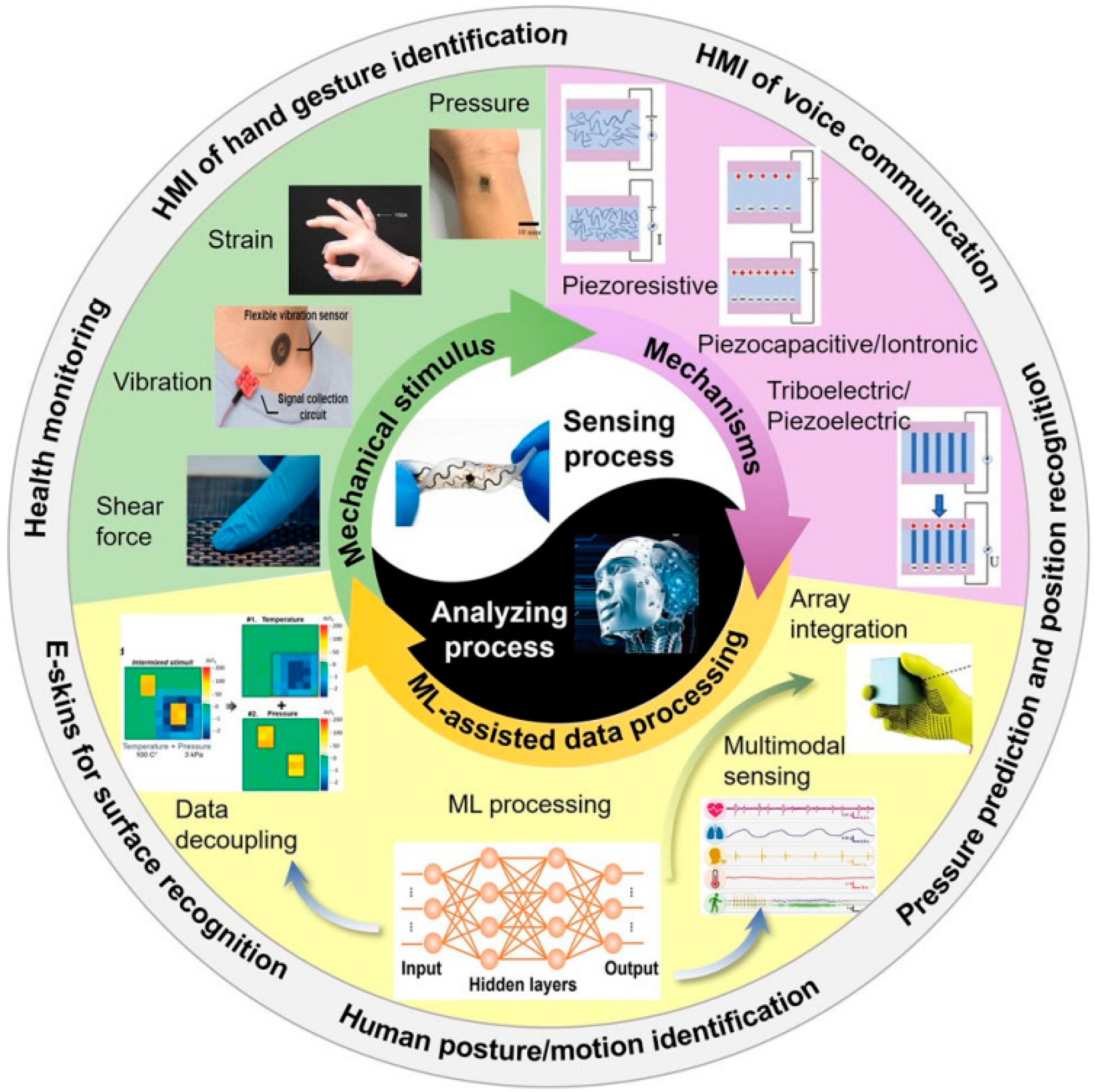
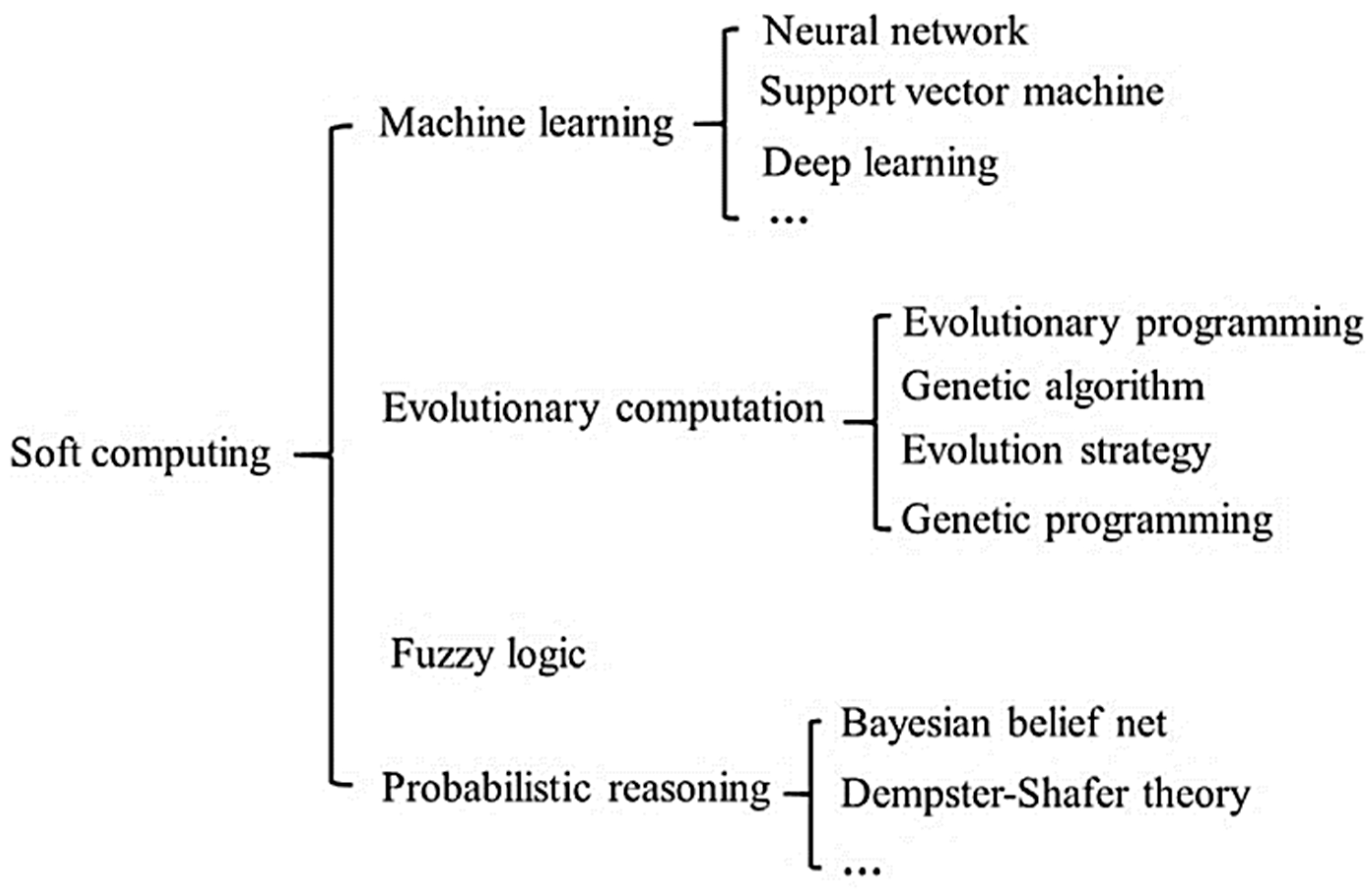
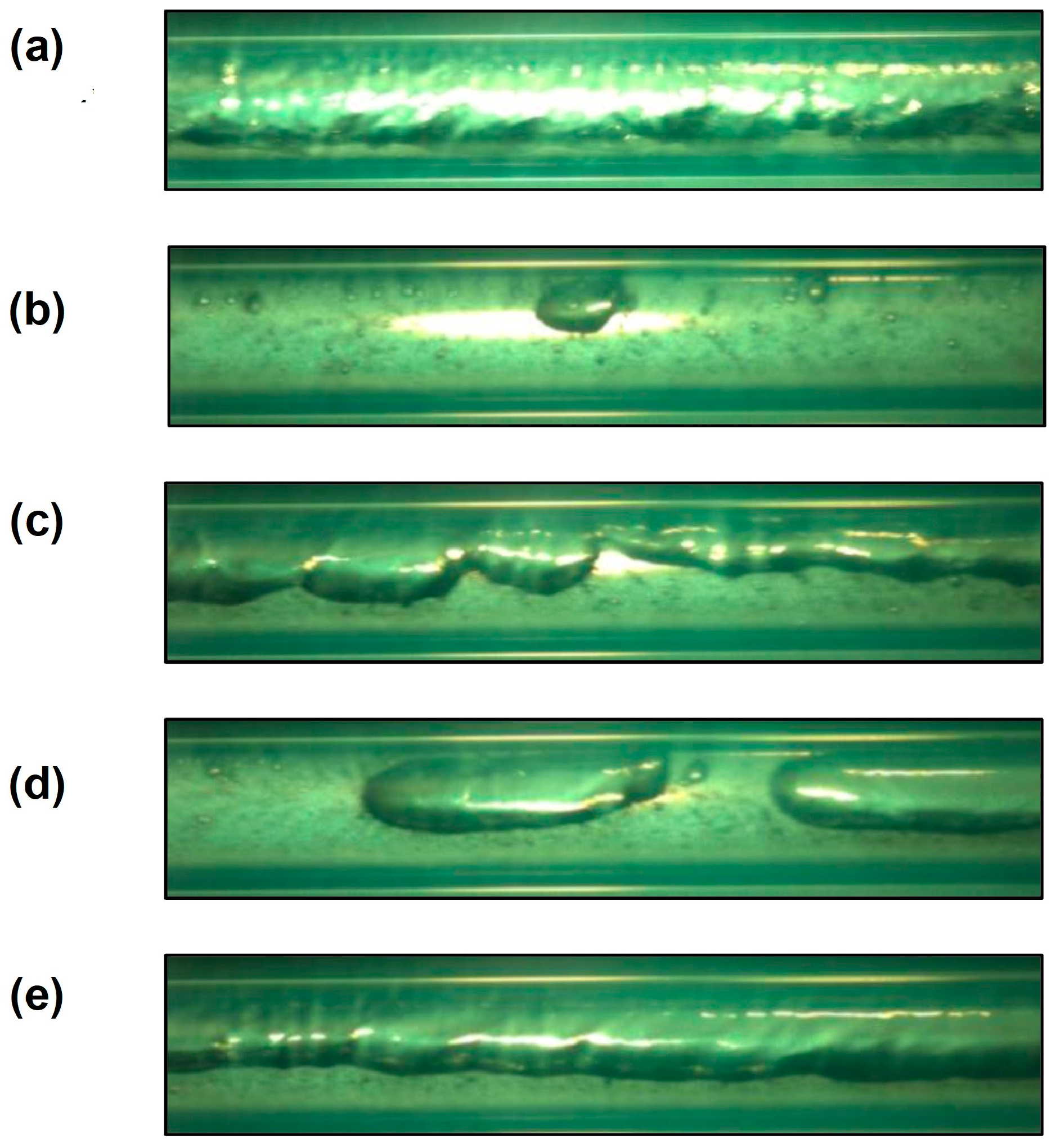

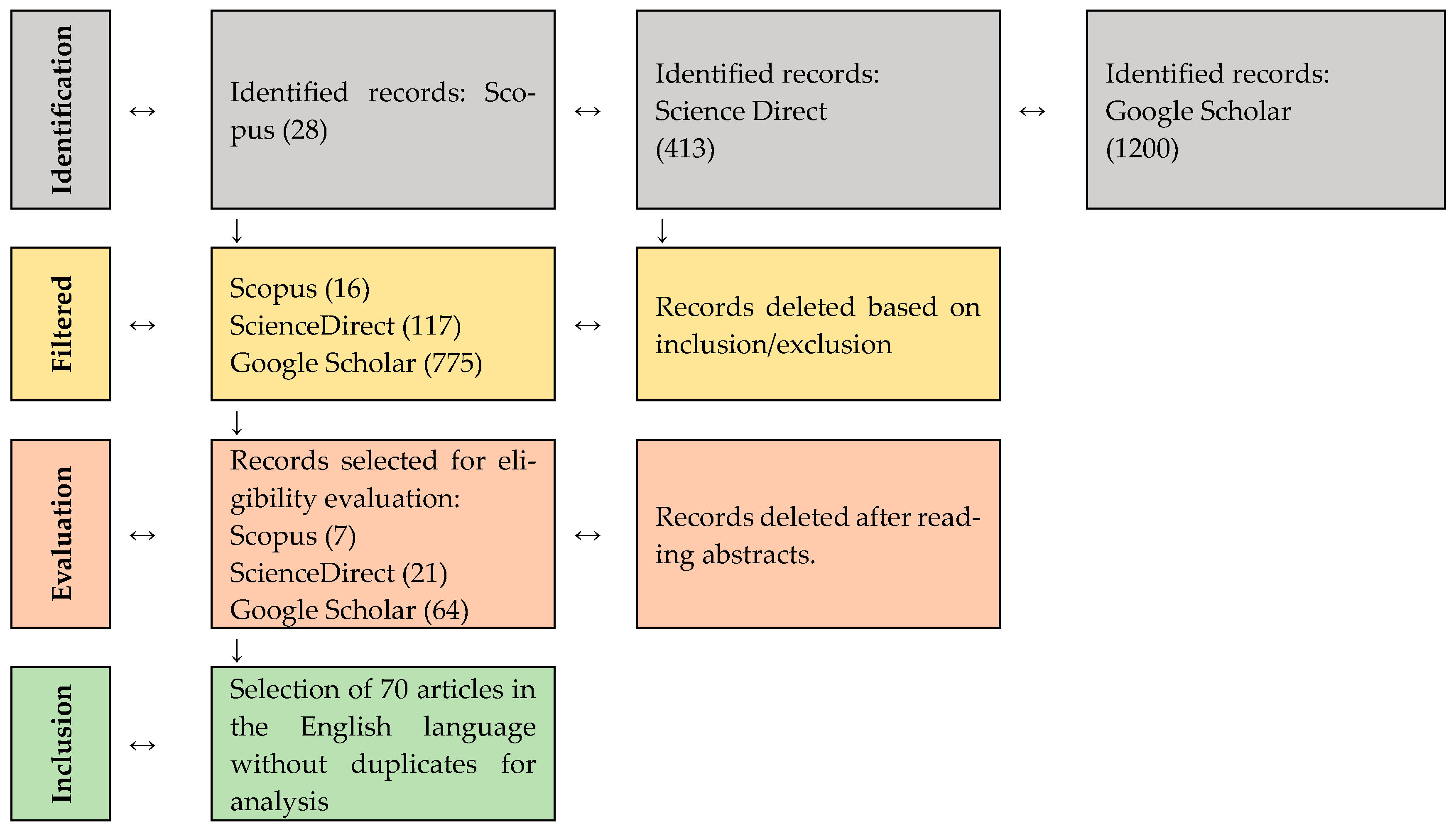

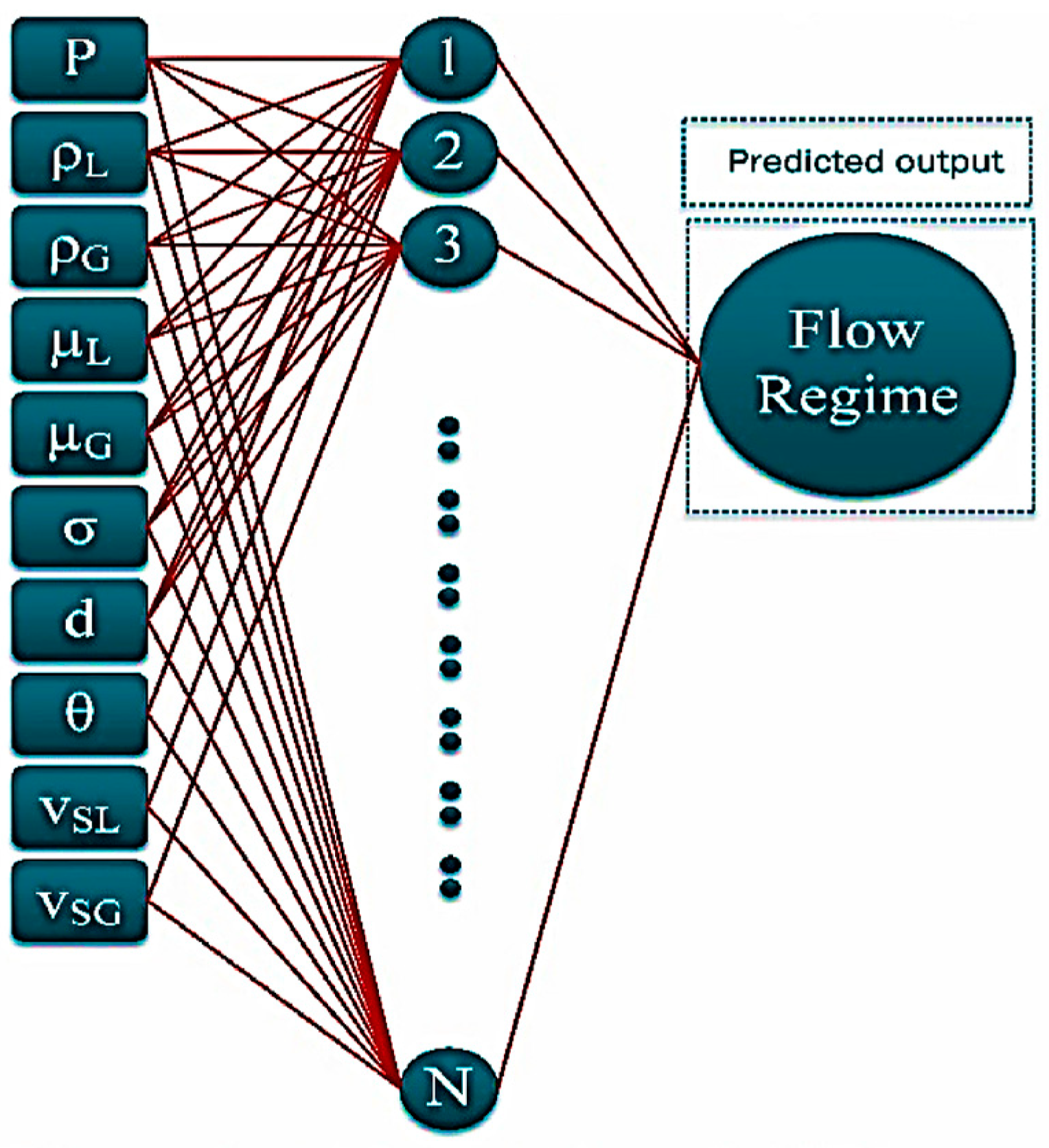
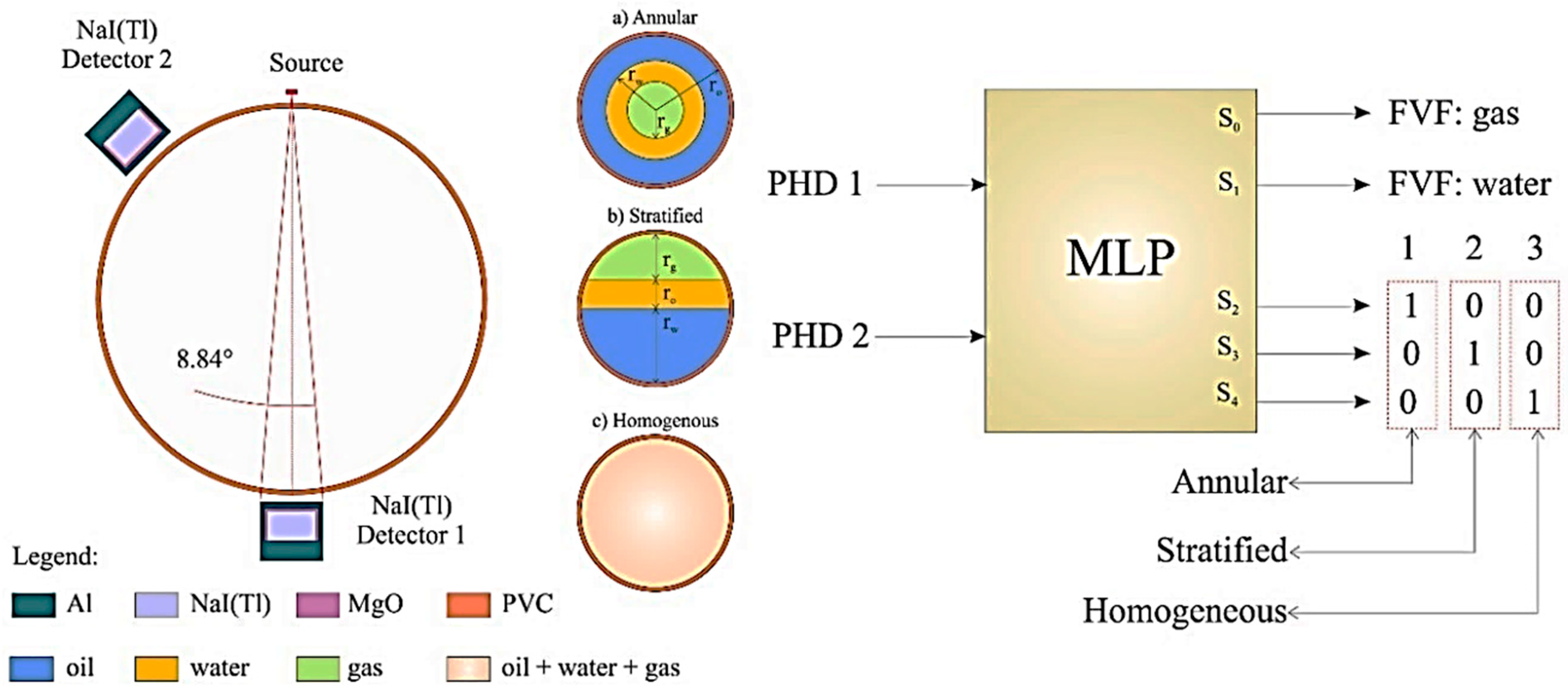
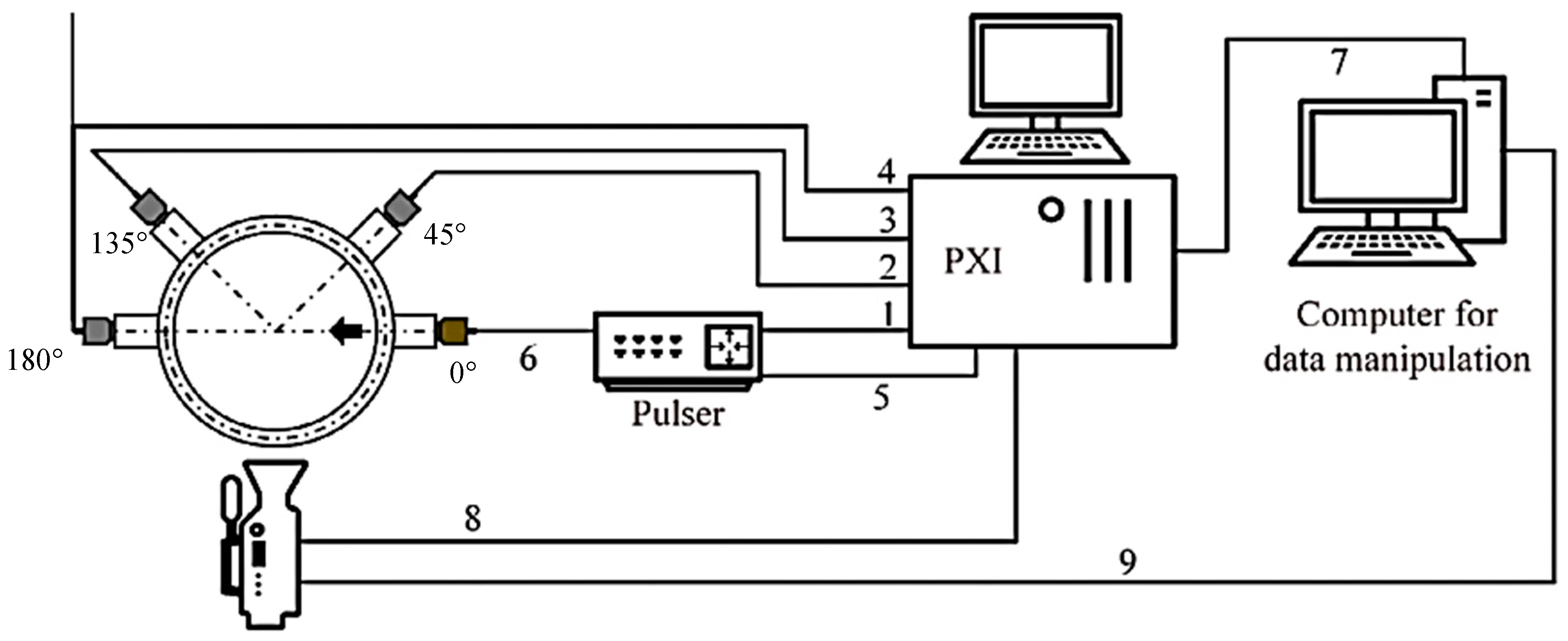
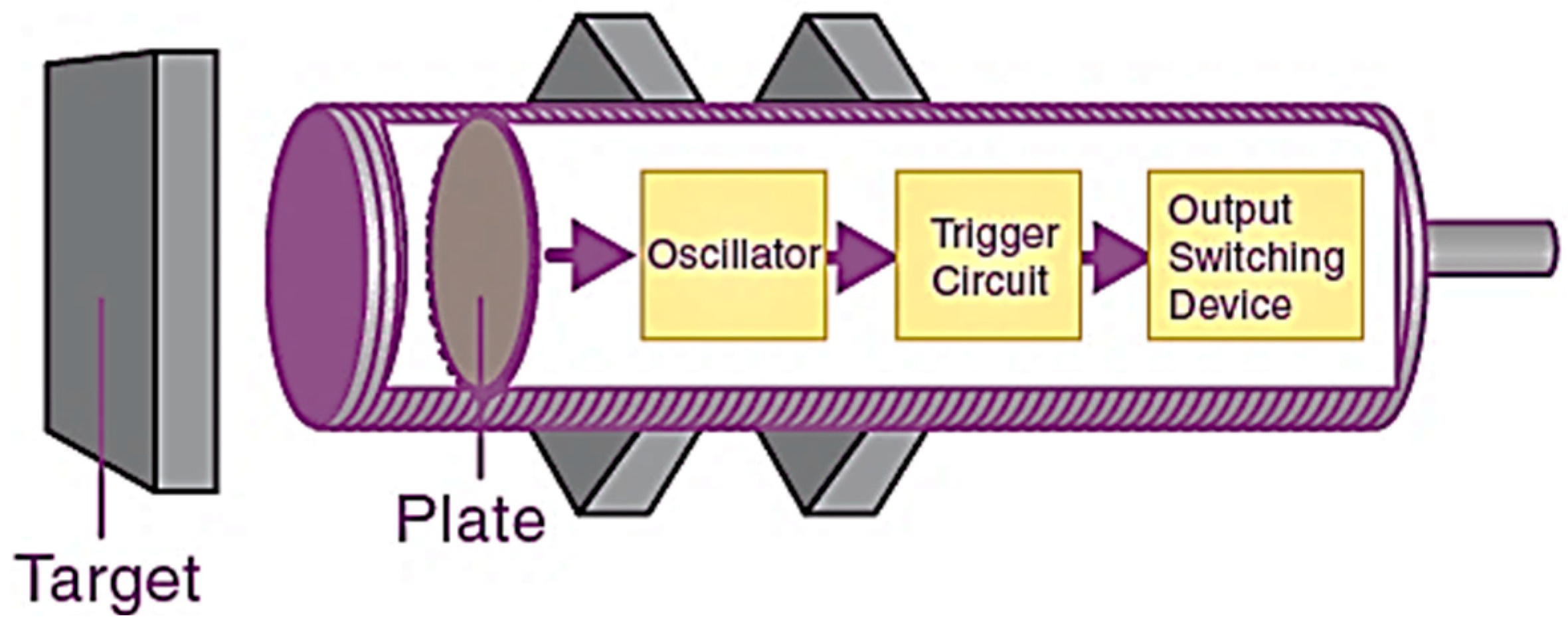
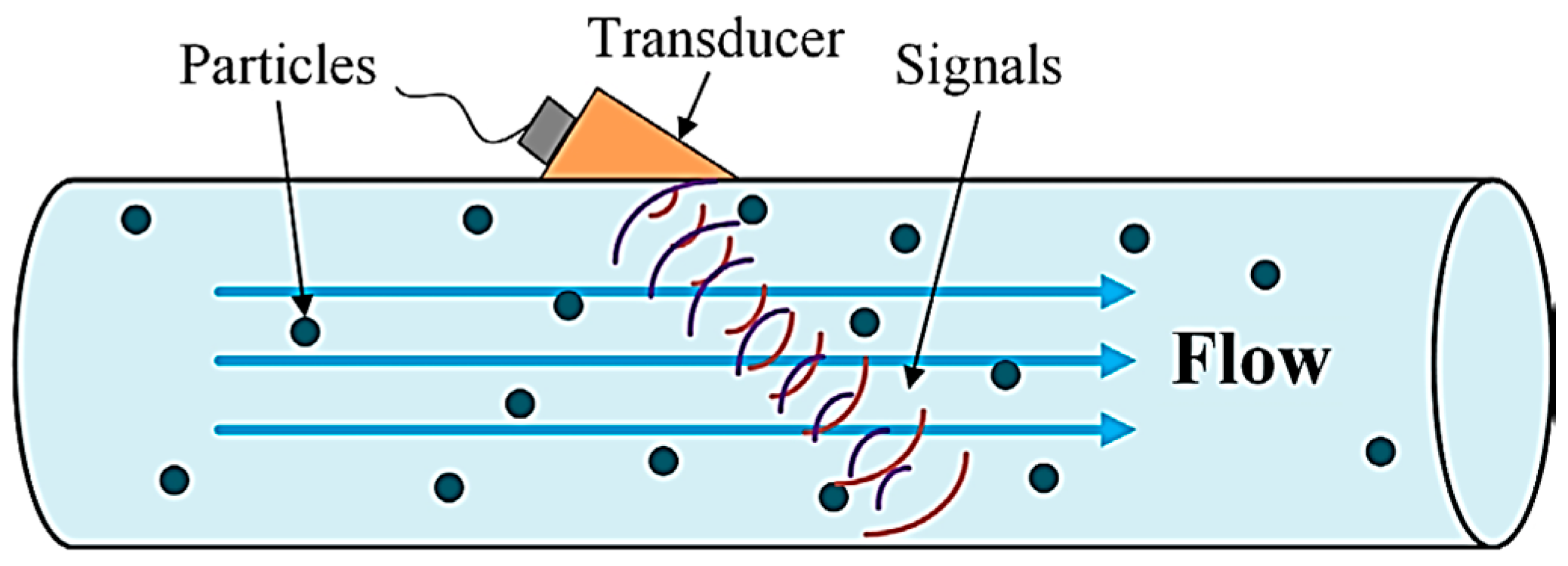
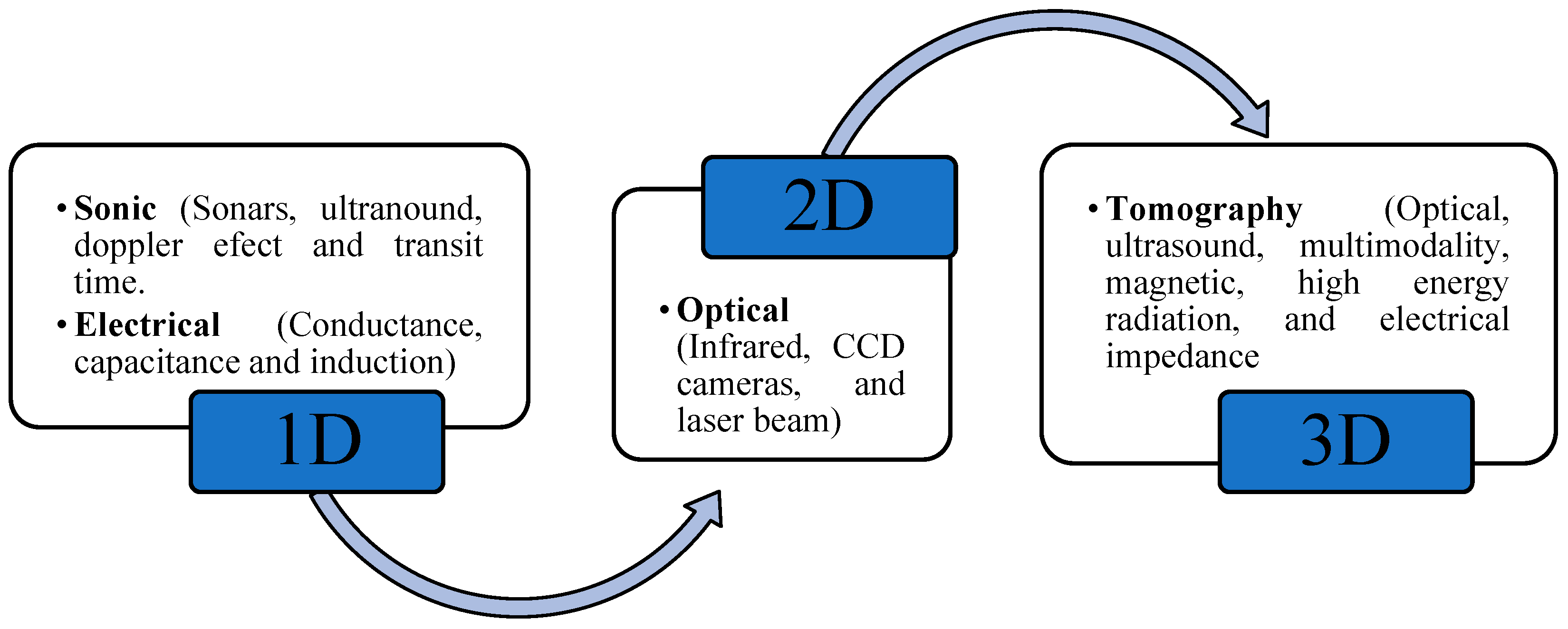

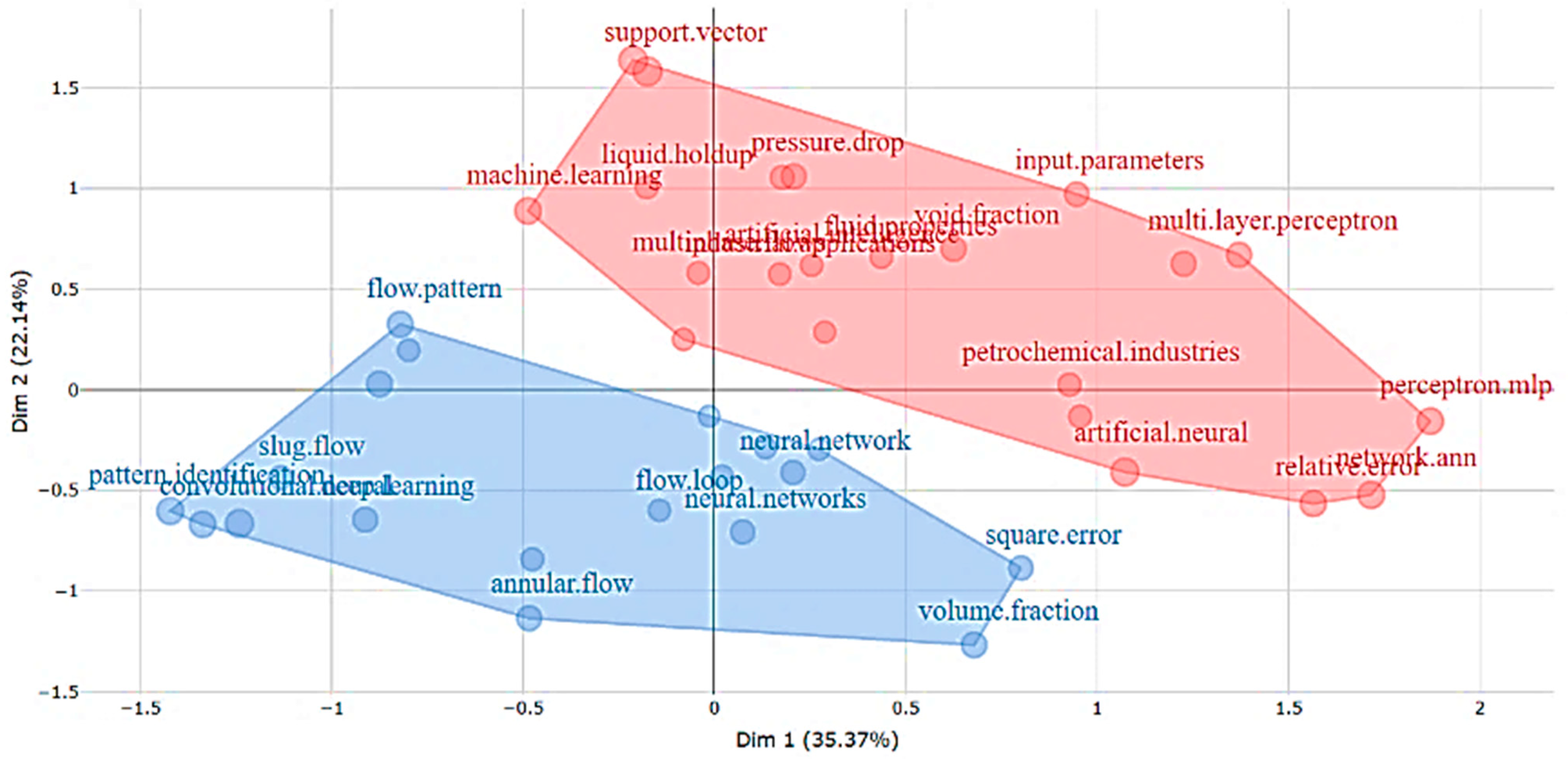
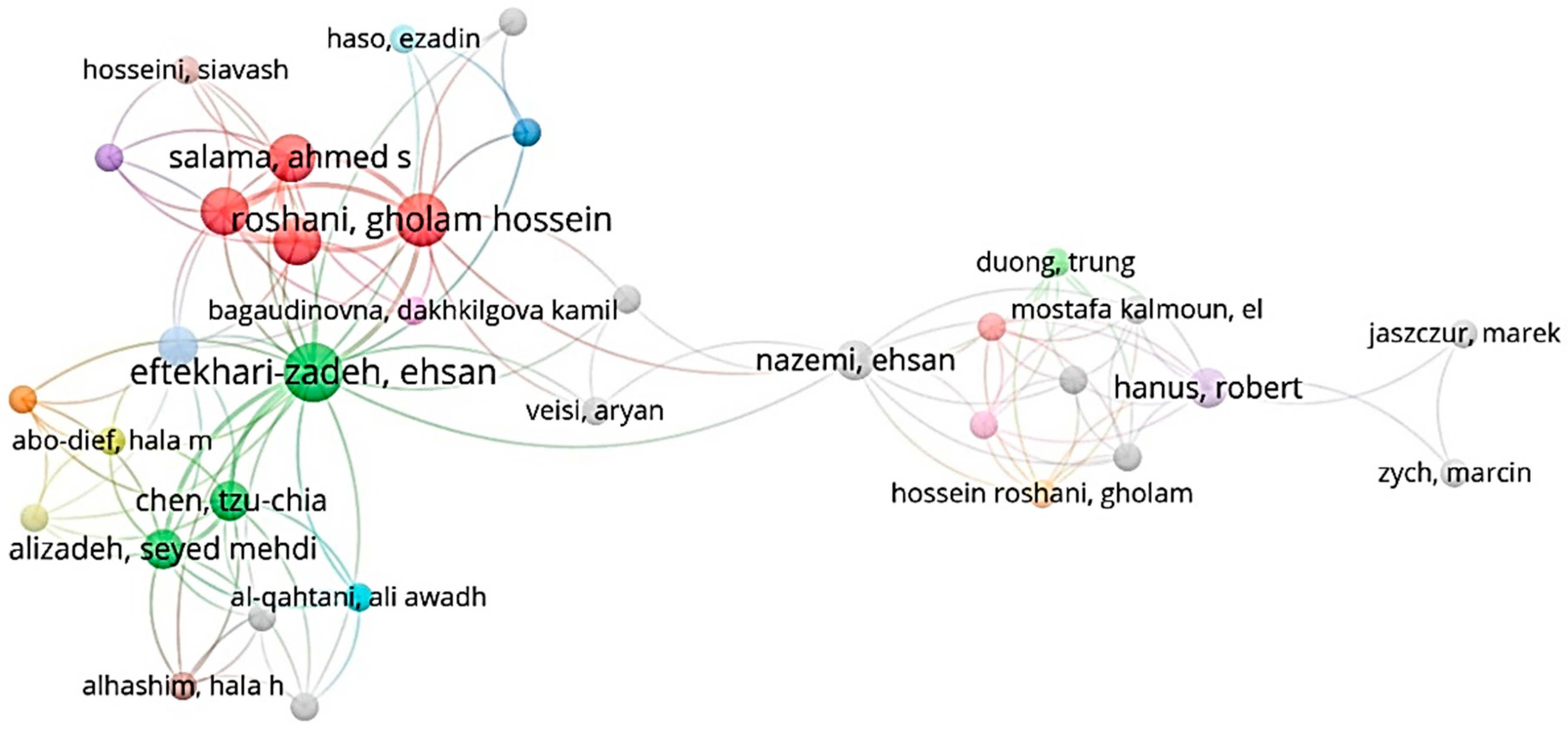
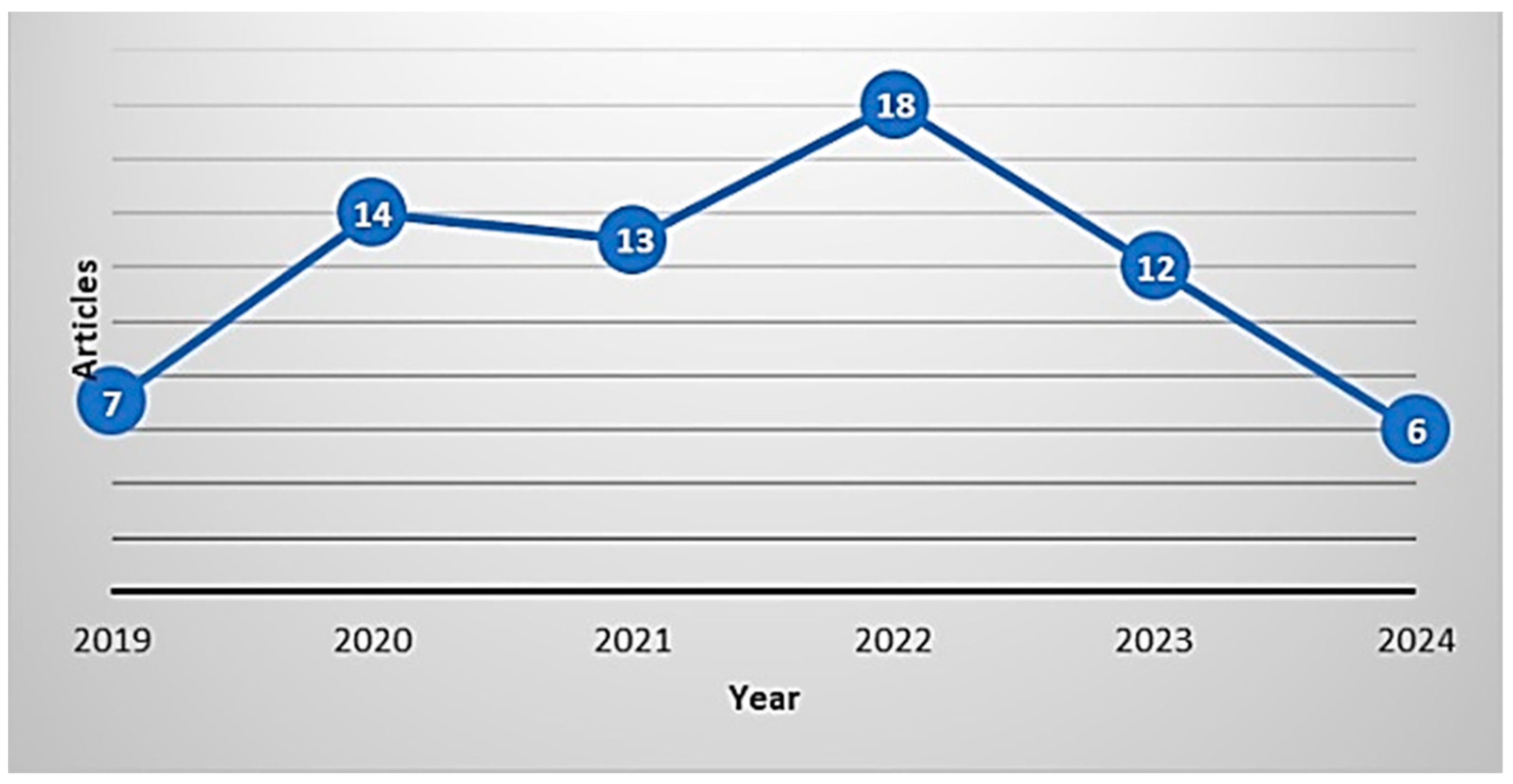
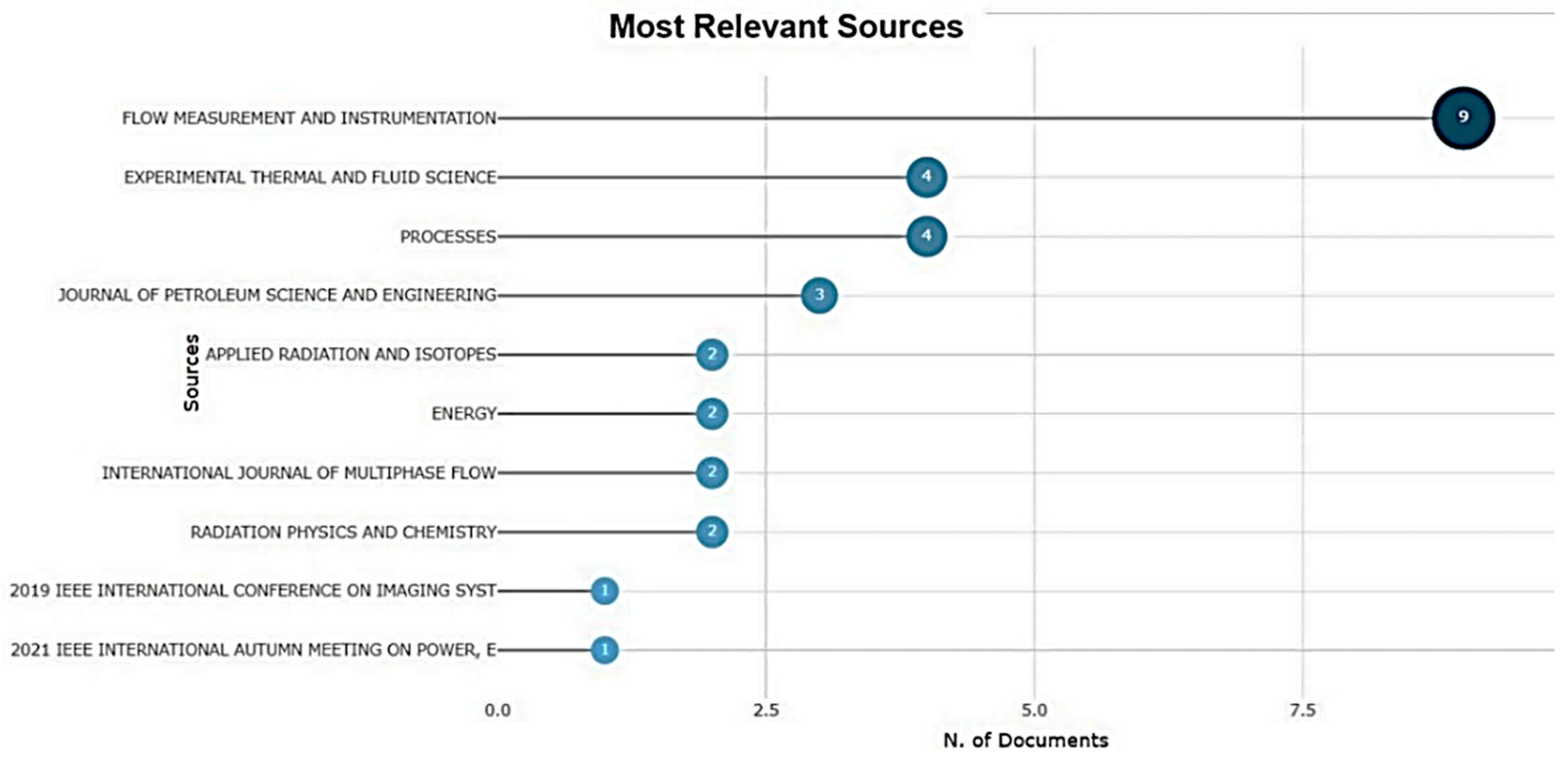

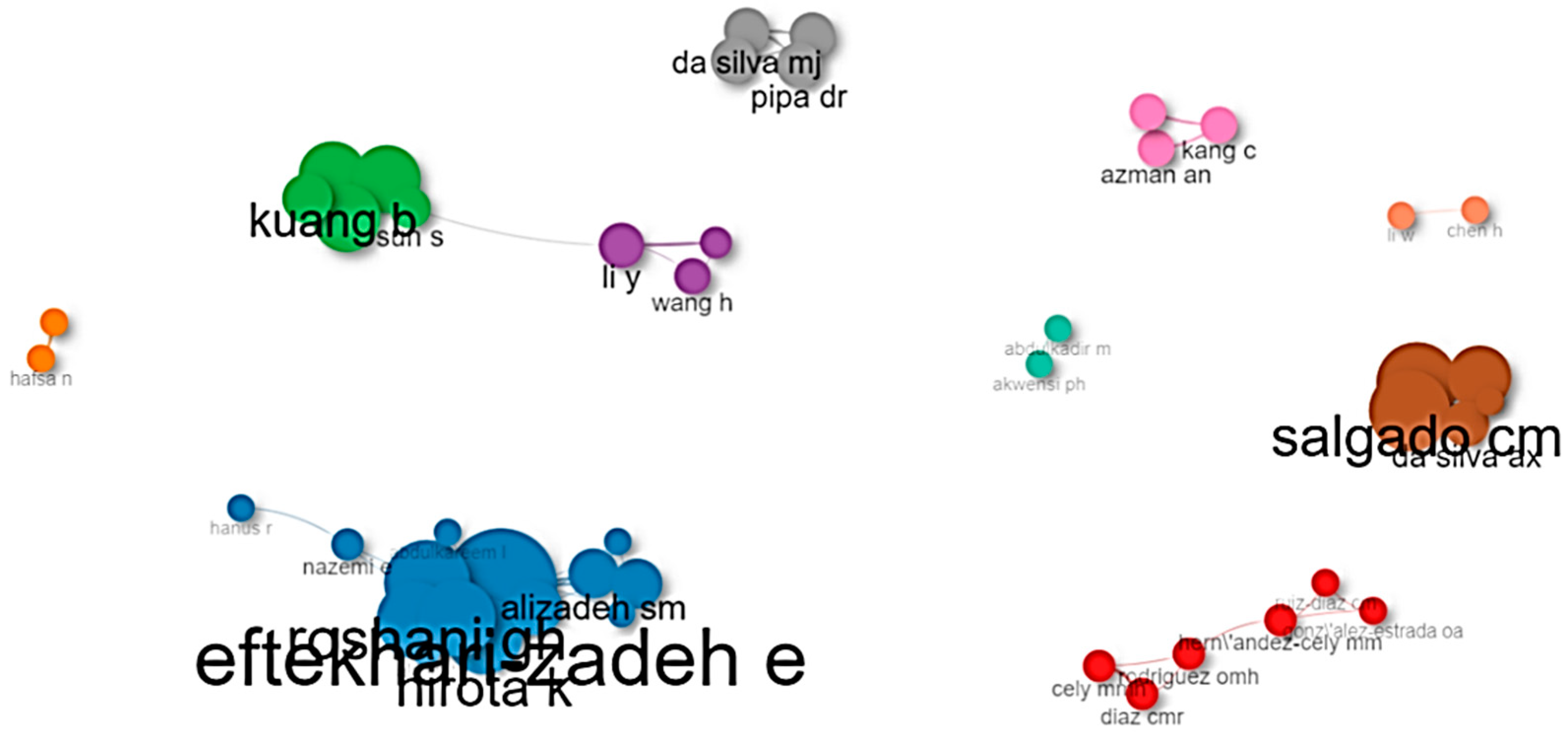
| Topic | Search terms |
|---|---|
| Subject | (“Artificial intelligence”) OR (“Machine learning”) OR (Neural network) |
| Approach | ((“Flow” AND “Liquid–gas”) OR (“Volume fraction” AND “Liquid–gas”) OR (“two-phase flow pattern classification”)) |
| Context | (“Pipes”) OR (“Gas pipeline”) OR (“Oil”) |
| Criteria | Inclusion | Exclusion |
|---|---|---|
| Publication Year | 2019–2024 | Before 2019 |
| Language | English | Other languages |
| Keywords | Artificial intelligence, machine learning, two-phase flow, liquid–gas flow, volume fraction—two-phase flow | Missing keywords |
| Database Source | Science Direct, Scopus, Google Scholar | Other databases |
| Document Type | Peer-reviewed journal articles, conference papers | Books, theses, non-peer-reviewed articles |
| Full-text availability | Available | Unavailable |
| Relevance to Topic | Directly related to the application of artificial intelligence techniques for the hydrodynamic characterization of two-phase liquid–gas flows in pipelines | Irrelevant to the topic |
| Title-Abs-Key | (“artificial intelligence” OR “machine learning” OR “neural network”) AND ((“flow” AND “liquid–gas”) OR (“volume fraction” AND “liquid–gas”) OR (“two-phase flow pattern classification”)) AND (“pipe” OR “gas pipeline” OR “oil”). | |
| Reference | Year | Characteristics | Measuring Instrument | Precision |
|---|---|---|---|---|
| [47] | 2021 | Horizontal pipeline, multi-domain feature processing. | Conductance ring sensor | <95% |
| [48] | 2022 | Standpipe uses time series of void fraction (from a wire mesh sensor), signal processing, and machine learning. | Wire mesh sensor (WMS) | <0.94 |
| [49] | 2022 | S-shaped riser pipe 1687 m long. | Regulating valves, flow meters, and differential pressure sensors are arranged along the pipeline. | <90% |
| [48] | 2023 | Two-phase upward flow in large-diameter vertical pipes. | A dimensional analysis was conducted, considering the pipe’s vertical geometry and the fluids’ thermophysical properties. | General of 81.75%. |
| ANN | Topology | Function |
|---|---|---|
| MLP | ML | Pattern recognition, function approximation, modeling and control, classification |
| BRF | TL | Function approximation, classification |
| WNN | TL | Forecast, classification, function approximation |
| ELM | TL | Function approximation, classification |
| Elman | Recurrent | Time-series forecast, pattern recognition |
| Hoplfield | Recurrent | Pattern recognition, associative memory, optimization, image processing |
| Kohonen | SL | Pattern recognition, associative memory, classification |
| PNN | FL | Pattern recognition, classification |
| CNN | ML | Optimization, classification |
| ART | Recurrent | Optimization, classification |
| CMAC | ML | Function approximation, modelling and control |
| CM | Multiple NNs | Pattern recognition, function approximation, modeling and control, classification |
| MLP | ML (13/2) | Predicting the weight percent of conversion and coke yield |
| SOC-CNN | ML (28/16) | Modeling and Operational Optimization |
| MLP | TL (3/5) | Study the effect of thermal and catalytic cracking under high-severity operating conditions |
| BP-NN | ML (3/5) | Product yield prediction |
| DNN | ML (3/5) | Product yield prediction |
| Reference | Year | Artificial Technique | Measuring Instrument | Precision | Characteristic |
|---|---|---|---|---|---|
| [51] | 2022 | Multilayer perceptron neural network | Gamma-ray sensor, horizontal pipe | Average relative error of less than 3% | Gas volume fraction and the identification of five flow regimes; the bubble, dispersed, plugged, annular, and slug regimes |
| [56] | 2022 | Multilayer perceptron neural network | Simulation of electrical capacitance and gamma-ray sensors | Error less than 0.006 | Volume fraction of two-phase flow (air–oil) |
| [57] | 2021 | Multilayer perceptron with the Levenberg–Marquardt algorithm | Simulation of gamma energy sensors, composed of barium-133 and cesium-137 radioisotopes and two sodium iodides | Average relative error is less than 2.82 | Flow pattern and gas volume percentage |
| [58] | 2023 | Multilayer perceptron neural network | A 137 Cs gamma-ray source and a 3-inch NaI(Tl) sensor, commonly used as a scintillation detector | Average relative error less than 0.00012 | Predictions of gas volume fraction (GVF) in two-phase flow independent of changes in the flow regime |
| [59] | 2022 | Multilayer perceptron (MLP) neural networks | Simulation of 137 Cs source sensors and two NaI detectors to record the photons that passed through the pipe with an inner diameter of 95 mm and a thickness of 2.5 mm | Low root means a square error of 1.1% | Volume fraction predictions, through simulation of three homogeneous, annular, and stratified regimes using the Monte Carlo N-Particle Code (MCNP) |
| [60] | 2020 | Neural networks | Sensor simulation of a gamma-ray source and a NaI(Tl) detector | Relative errors less than 1.1% | Volume fraction predictions in stratified flow and annular flow |
| [61] | 2021 | Deep rectifier neural network (DRNN) | Gamma-ray densitometry | Root mean square error less than 0.8 | Prediction of volume fractions |
Disclaimer/Publisher’s Note: The statements, opinions and data contained in all publications are solely those of the individual author(s) and contributor(s) and not of MDPI and/or the editor(s). MDPI and/or the editor(s) disclaim responsibility for any injury to people or property resulting from any ideas, methods, instructions or products referred to in the content. |
© 2024 by the authors. Licensee MDPI, Basel, Switzerland. This article is an open access article distributed under the terms and conditions of the Creative Commons Attribution (CC BY) license (https://creativecommons.org/licenses/by/4.0/).
Share and Cite
Gómez Camperos, J.A.; Hernández Cely, M.M.; Pardo García, A. Artificial Intelligence Techniques for the Hydrodynamic Characterization of Two-Phase Liquid–Gas Flows: An Overview and Bibliometric Analysis. Fluids 2024, 9, 158. https://doi.org/10.3390/fluids9070158
Gómez Camperos JA, Hernández Cely MM, Pardo García A. Artificial Intelligence Techniques for the Hydrodynamic Characterization of Two-Phase Liquid–Gas Flows: An Overview and Bibliometric Analysis. Fluids. 2024; 9(7):158. https://doi.org/10.3390/fluids9070158
Chicago/Turabian StyleGómez Camperos, July Aandrea, Marlon Mauricio Hernández Cely, and Aldo Pardo García. 2024. "Artificial Intelligence Techniques for the Hydrodynamic Characterization of Two-Phase Liquid–Gas Flows: An Overview and Bibliometric Analysis" Fluids 9, no. 7: 158. https://doi.org/10.3390/fluids9070158





